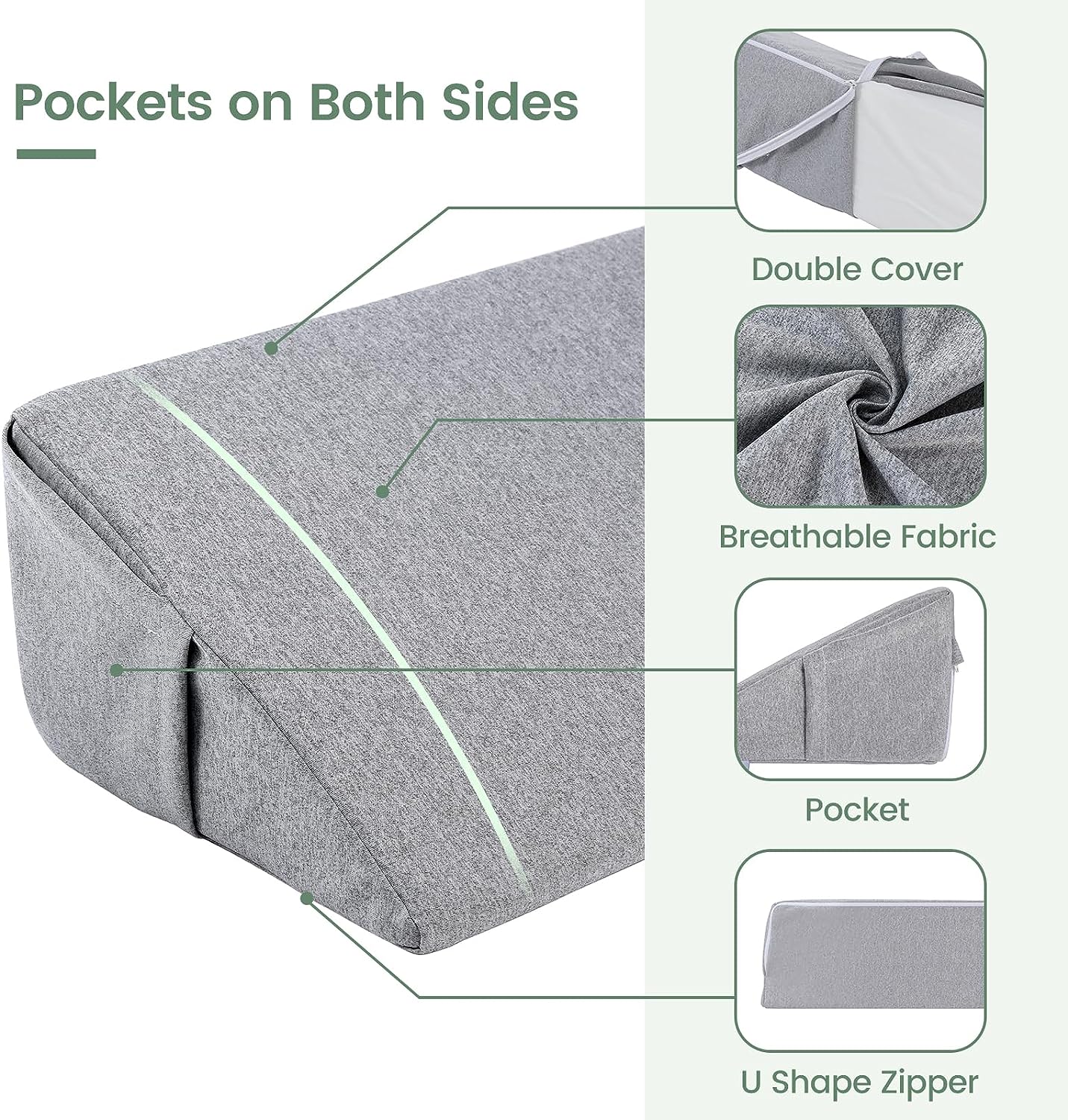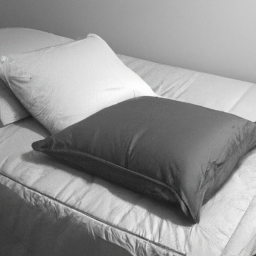In this article, we will explore the question of whether wedge pillows can help improve circulation. We will discuss the benefits of using wedge pillows, how they work, and their potential impact on circulation. By the end of this article, you will have a better understanding of whether wedge pillows are a suitable solution for improving circulation. So let’s get started and find out if wedge pillows can truly make a difference in your overall blood flow.
Do Wedge Pillows Help With Circulation?
Wedge pillows have gained popularity in recent years for their various health benefits, including their potential to improve circulation. If you’ve been wondering whether wedge pillows can actually help with circulation issues, this article will provide you with the information you need to make an informed decision.
What are Wedge Pillows?
Wedge pillows are specially designed pillows that have an inclined shape, resembling a wedge. They are typically made of supportive materials such as memory foam or shredded foam, which allows them to maintain their shape and provide optimal comfort and support. The unique design of these pillows allows for elevation of the upper body or legs, depending on the desired effect.
Importance of Circulation
Before diving into the benefits of wedge pillows for circulation, let’s understand why proper circulation is important for overall health. Circulation refers to the movement of blood and other bodily fluids throughout the body. Efficient circulation is crucial for the delivery of oxygen, nutrients, and immune cells to various organs and tissues. Poor circulation, on the other hand, can lead to a range of health issues.
Signs of poor circulation can include cold extremities, numbness or tingling in the limbs, muscle cramps, and slow or non-healing wounds. If you experience these symptoms, it is important to consult with a healthcare professional to determine the underlying cause and explore potential solutions.
Understanding Circulation Issues
There are several factors that can contribute to poor circulation. These can include sedentary lifestyle, obesity, smoking, certain medical conditions such as diabetes or peripheral artery disease, and even genetic predispositions. Additionally, age can also play a role, as circulation tends to decline with age.
Certain health conditions are closely associated with circulation problems. Conditions such as varicose veins, deep vein thrombosis (DVT), and edema (swelling) are all related to circulatory issues. If you have been diagnosed with any of these conditions, it is essential to speak with your healthcare provider about appropriate management strategies.
How Wedge Pillows Work
Wedge pillows work by elevating specific parts of the body, encouraging a more efficient blood flow and circulation. Depending on the specific needs, wedge pillows can be used to elevate the upper body or the legs.
When used to elevate the upper body, wedge pillows can help alleviate pressure on the veins and improve blood circulation. This can be particularly beneficial for individuals with conditions such as varicose veins or edema, as it helps to reduce swelling and fluid retention.
When used to elevate the legs, wedge pillows can promote better circulation in the lower extremities. Elevating the legs helps to reduce blood pooling in the veins, which can be a common issue among individuals with poor circulation. By improving blood flow, wedge pillows can potentially alleviate discomfort and heaviness in the legs.
Benefits of Wedge Pillows for Circulation
The use of wedge pillows for circulation can offer several benefits. One of the key advantages is improved blood circulation. By elevating certain body parts, wedge pillows help to reduce the strain on blood vessels and enhance the flow of oxygen and nutrients to various organs and tissues.
Additionally, wedge pillows can also aid in lymphatic circulation. The lymphatic system plays a crucial role in removing toxins and waste from the body. By supporting the body in an elevated position, wedge pillows can facilitate the drainage of lymph fluid and promote a healthier lymphatic system.
Another benefit of wedge pillows is the reduction of swelling and fluid retention. As mentioned earlier, elevating the legs or upper body can help minimize swelling and edema, particularly in the lower extremities. By reducing fluid retention, wedge pillows can provide relief from discomfort and improve overall mobility.
Research and Studies
Scientific evidence supporting the use of wedge pillows for circulation is still limited, but there are some studies that suggest their effectiveness. Clinical trials have shown that elevating the legs with a wedge pillow can significantly reduce fluid retention and improve blood circulation in healthy individuals and those with venous insufficiency.
While more research is needed to explore the full extent of the benefits, these studies indicate that wedge pillows can indeed have a positive impact on circulation.
Proper Usage and Positioning
To derive the maximum benefits from wedge pillows for circulation, it is crucial to understand the correct usage and positioning. When using a wedge pillow to elevate the upper body, make sure to position it under the upper back and shoulders. This will help maintain a gentle incline that supports proper circulation without causing strain on the neck and shoulders.
When using a wedge pillow to elevate the legs, position it under the lower legs and feet. This will create a slight elevation that facilitates better blood flow and reduces swelling in the legs.
It is important to note that the angle of elevation and positioning may vary based on individual needs and comfort levels. If you have any pre-existing medical conditions, it is advisable to consult with your healthcare provider for personalized recommendations.
Potential Side Effects
While wedge pillows are generally considered safe for most individuals, there are some potential side effects and precautions to be aware of. Some people may experience discomfort or soreness when using wedge pillows with too steep of an incline. It is recommended to start with a lower angle and gradually increase the elevation if needed.
If you have any respiratory conditions, such as sleep apnea or asthma, it is important to consult with a healthcare professional before using a wedge pillow. The elevated position may affect breathing patterns and could potentially worsen certain respiratory conditions.
Alternative Solutions for Circulation
Apart from using wedge pillows, there are other methods and techniques that can help improve circulation. Regular exercise, such as walking or swimming, is known to have numerous benefits for circulation. Maintaining a healthy weight, avoiding prolonged sitting or standing, and wearing compression stockings are also effective strategies for promoting circulation.
When considering wedge pillows as a solution for circulation issues, it is essential to assess your individual needs and consult with a healthcare professional. They can provide guidance on the most suitable options for your specific condition.
Conclusion
Wedge pillows can be a valuable tool in improving circulation and managing related issues such as swelling and fluid retention. By elevating specific body parts, these pillows encourage better blood and lymphatic circulation, potentially providing relief from discomfort and promoting overall health.
While scientific evidence supporting the use of wedge pillows for circulation is still emerging, existing studies suggest their effectiveness. However, it is important to use wedge pillows correctly and consult with a healthcare professional if you have any pre-existing medical conditions.
Incorporating wedge pillows into your lifestyle, along with other circulation-boosting practices, may help improve your overall well-being. So, whether you’re seeking relief from varicose veins or simply aiming for better blood flow, wedge pillows could be a worthy addition to your daily routine.







